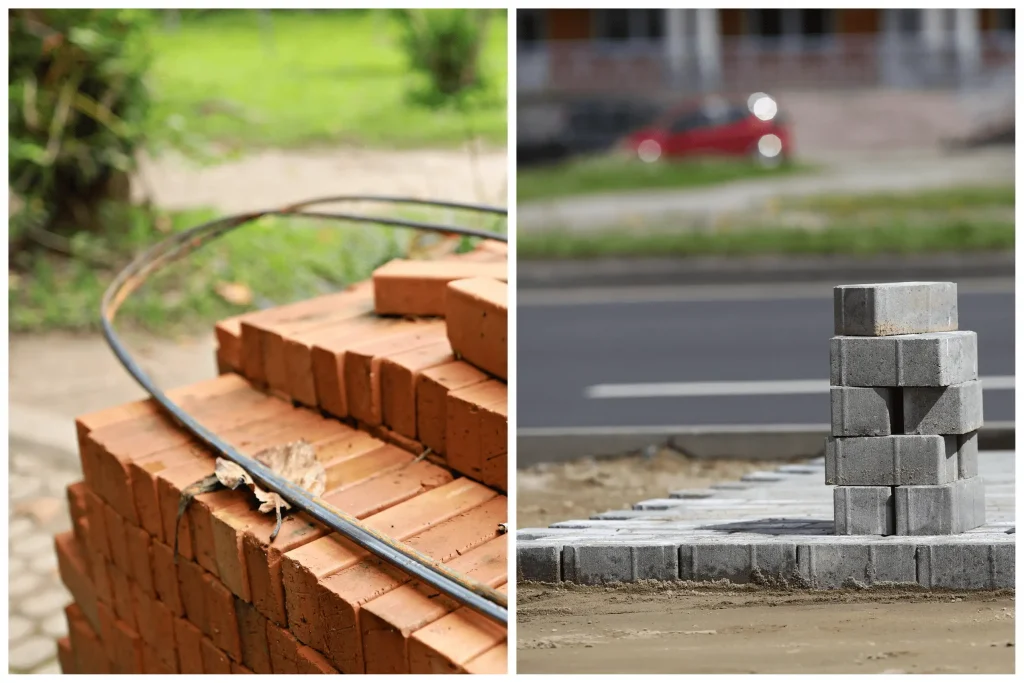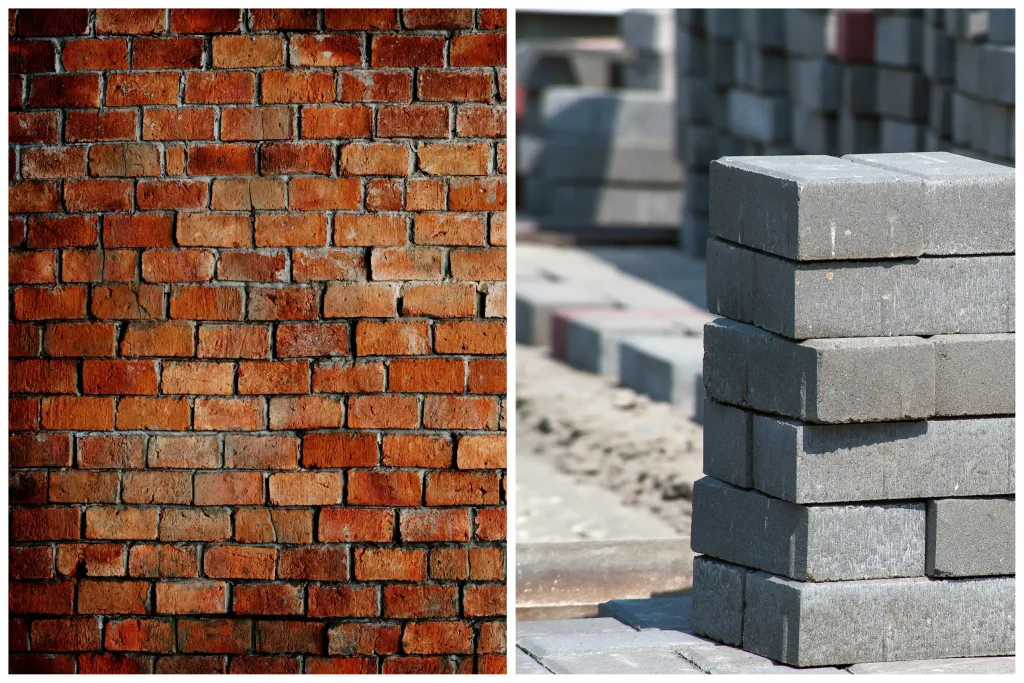The field of masonry has seen a proliferation of new and innovative building materials in recent years. Several examples of new-age materials used in home construction include:
- Autoclaved Aerated Concrete (AAC) blocks
- Insulated Concrete Forms (ICFs), and
- Geopolymer bricks.
That said, brick and cement blocks are the most common building materials in use today in masonry. However, the masonry circles’ brick vs cement block debate has intensified.
While some argue cement blocks are the better choice, others stand by bricks as the superior material. So which one is better? The answer is not always clear-cut, and the best way to decide is to weigh the pros and cons of each. Allow us to elaborate further in this blog.
Difference between Bricks and Cement Blocks in Masonry
Concrete bricks vs red bricks is a common debate over both these building materials. Both have their own distinct advantages and drawbacks. Let’s compare them in detail to better understand what are the factors that differentiate them.

Take a look at red bricks vs cement blocks in terms of their cost, composition, & so on
| Brick vs Cement Block: Differentiating Factors | Brick Blocks | Cement Blocks |
| Composition | The primary component of red bricks is clay, which is a type of sedimentary rock. The other ingredients that go into the making of redbricks are Lime, Alumina, Sand, Iron Oxide, and Magnesia. This entire mixture is mixed with water and then formed into bricks which are then burnt at high temperatures in a kiln to create bricks. | These are made from a mixture of gravel, sand, and cement. The cement is the primary binding agent here. As with the red bricks, the mixture is mixed with water, poured into moulds, and then allowed to harden. In certain situations, the fine sand can be substituted by fly ash. |
| Compressive Strength | Red bricks have a compressive strength of 3.5 to 35 N/mm². | Concrete blocks have a compressive strength of 4 to 5 N/mm² based on the types of cement used in its manufacture. |
| Durability | Red bricks are more durable primarily due to the fact that clay is its primary ingredient that is resistant to weathering and cracking. | Concrete blocks, on the other hand, are more susceptible to damage from the elements |
| Water Resistance and Thermal Conductivity | Red bricks work better for colder regions where the goal is to warm up the building during the day and retain the heat during the night and vice versa. | Cement blocks are the opposite, they are naturally better at resisting water, but if they do get wet, they take a lot longer to dry out. |
| Cost and Availability | Red bricks are typically more expensive than concrete blocks. This primarily comes down to the primary ingredient, clay which is costly when compared to cement. | Cement blocks are generally easier to manufacture, but if you live close to a location with an abundance of brick kilns, red bricks may be easier to obtain. |
Advantages and Disadvantages of Red Bricks
Red Bricks have stood the test of time and have been used in masonry for centuries. Here is a brief summary of their pros and cons.

Primarily composed of clay, red bricks continue to be used in masonry despite the rising availability of alternatives
| Advantages | Disadvantages |
| Highly fire-resistant | The manufacturing process isn’t environmentally friendly |
| More durable than their cement counterparts | Brittle and thus require careful handling |
| Recyclable and reusable | Offer less tensile strength |
| Cost effective | Uneven surfaces often lead to higher mortar consumption during construction |
Advantages and Disadvantages of Concrete Blocks
Concrete or cement blocks are a fairly recent addition to the world of masonry. Here is a

Easily manufactured, concrete blocks prove to be a competent competitor to red bricks
| Advantages | Disadvantages |
| Offer better thermal and sound insulation than red bricks | Not as aesthetically pleasing as red bricks |
| More environmentally friendly in comparison | Prone to water seepage over time |
| Consistency in their size (they are generally about 2.5 times larger than red bricks) and shape reduces the need for mortar and plaster | Require waterproofing due to high porosity |
The Final Verdict on Brick vs Cement Block

To go with highly durable red bricks or the more environmentally-friendly concrete blocks? What will it be?
Taking all things into consideration, both cement blocks and red bricks excel in their own unique ways, and the question of what is best basically comes down to the individual needs of a specific project. Hence, the question of what is better primarily depends on the location and intended usage of the construction material.
FAQs
Red bricks andcement blocks are commonly used in construction as they are tried and tested construction materials that have stood the test of time.
Yes, red bricks can be used for both load and non-load-bearing walls.
There is no one specific mortar or cement mix when it comes to laying cement blocks. The ratio of the mortar will vary based on the type of cement block, the load the wall will support, and the climate for which the block wall will be designed.
Concrete blocks and red bricks have their own distinct advantages and drawbacks. That said, concrete blocks are stronger, more eco-friendly, and more economical than red bricks.

